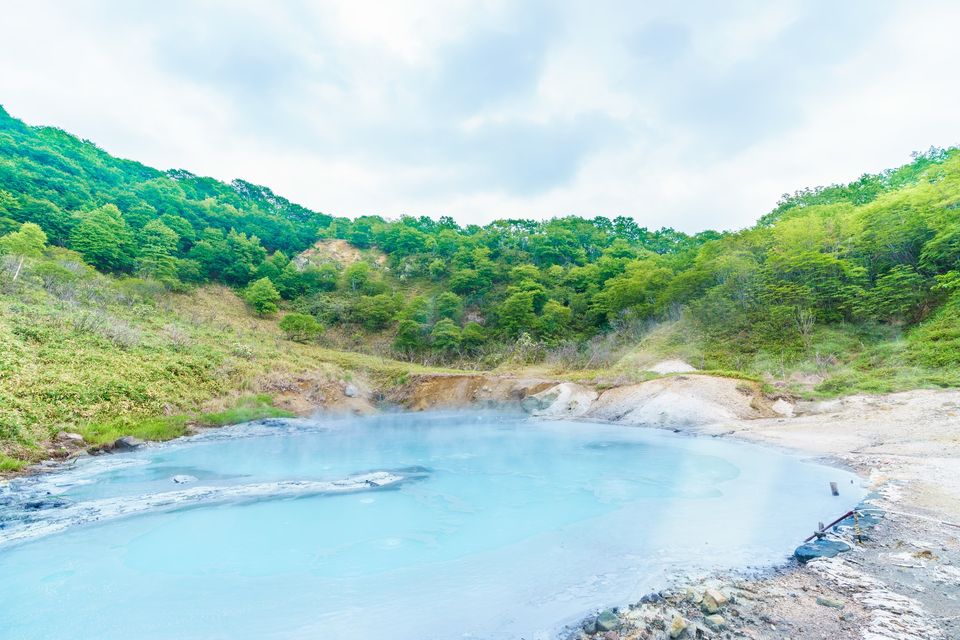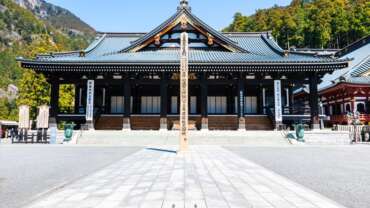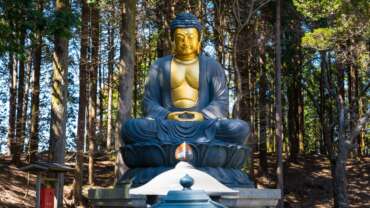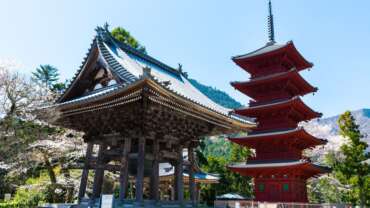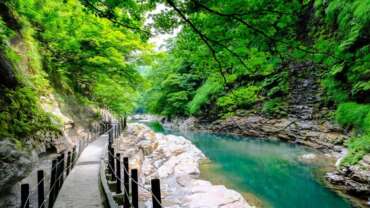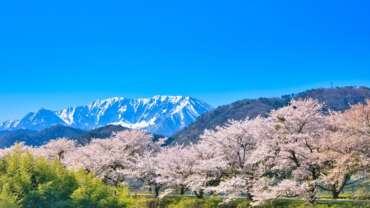Hirosaki Park Cherry Blossoms
View the oldest Somei-Yoshino of Hirosaki Park
The sakura viewing in Hirosaki Park is famous, not only because of the spectacular light-pink blanket of blossoms that arrive every spring, but for its old Somei-Yoshino cherry tree, planted in 1882.
Quick Facts
– Hirosaki Park is part of the Hirosaki Castle grounds.
– Nighttime illuminations during the Hirosaki Park Cherry Blossom Festival are a major highlight.
Kamagatani Cherry Blossoms
Come for the blossoms, stay for the mountain trekking
Kamagatani Park, an outstanding spot selected by the Japan Cherry Blossom Association, will make a visit in spring one of your most memorable outings. There are some great mountain hiking trails in the area as well.
Chidorigafuchi Moat
Stroll along Edo Castle’s moat
The name of this moat northwest of the Imperial Palace, Chidorigafuchi, is said to come from its unusual shape. The structure of the walls resembles plovers, called chidori in Japanese.
NARA
Yoshino – The birthplace of reiki—watched over by protectors of the natural world
Yoshino’s centerpiece is the sacred Mt. Yoshino, a UNESCO World Heritage site whose extraordinary beauty is worthy of the many poems written about it throughout the centuries.
Don’t Miss
– See the extraordinary display of 30,000 cherry trees burst into color from late March through April.
– Walk in the footsteps of ancient mountain ascetics.
– Luxuriate in the area’s mineral-rich hot springs.
Kitakami Tenshochi Cherry Blossom Festival
Welcome in spring under a canopy of cherry blossom
The Kitakami Tenshochi Cherry Blossom Festival is held every year from early April to early May in Kitakami Tenshochi Park . Considered one of the top three cherry blossom viewing spots in Tohoku , along with Hirosaki in Aomori and Kakunodate in Akita , Tenshochi is a visual delight.
Don’t Miss
– Strolling through a tunnel of pink.
– The food and local products available throughout the park during the festival.
Kintaikyo Bridge
A singular and elegant wooden bridge once crafted entirely without nails
Kintai Bridge’s five high arches—originally constructed without nails from Japanese cypress, chestnut and oak—span the banks of the Nishiki River in Iwakuni , a city in Yamaguchi Prefecture. The bridge’s aspect changes significantly depending on the season and time of day, a visual feast for photographers and woodblock print artists such as Hokusai.
Cross the bridge and enter Kikko Park, which boasts homes where samurai families once lived.
Don’t Miss
– A chance to view the bridge during cherry blossom season.
– Kikko Park and its 19th-century buildings.
– Venturing further afield to Iwakuni Castle and the Iwakuni Art Museum.
Hanamiyama Park
Family’s generosity a real gift of nature
Every spring, thousands of visitors flock to Hanamiyama Park to see the remarkable work of the Abe family. The Abes opened their privately owned farmland to the public as a park in 1959. Visit this park to enjoy hundreds of cherry blossoms and other flowering plants.



